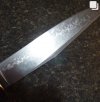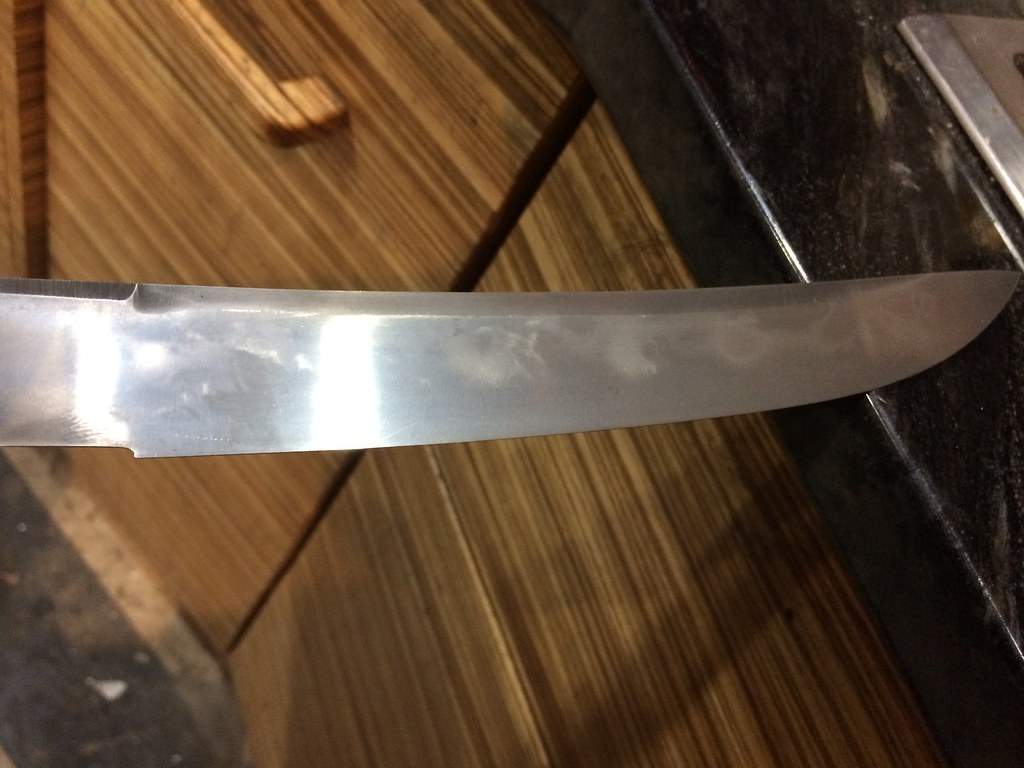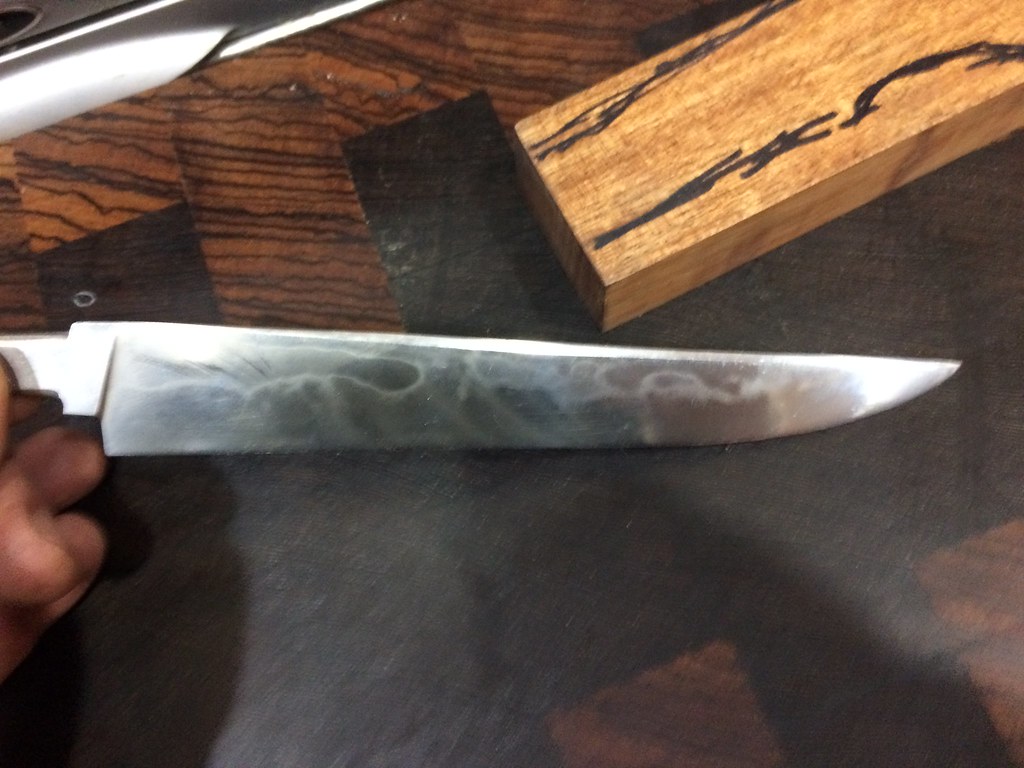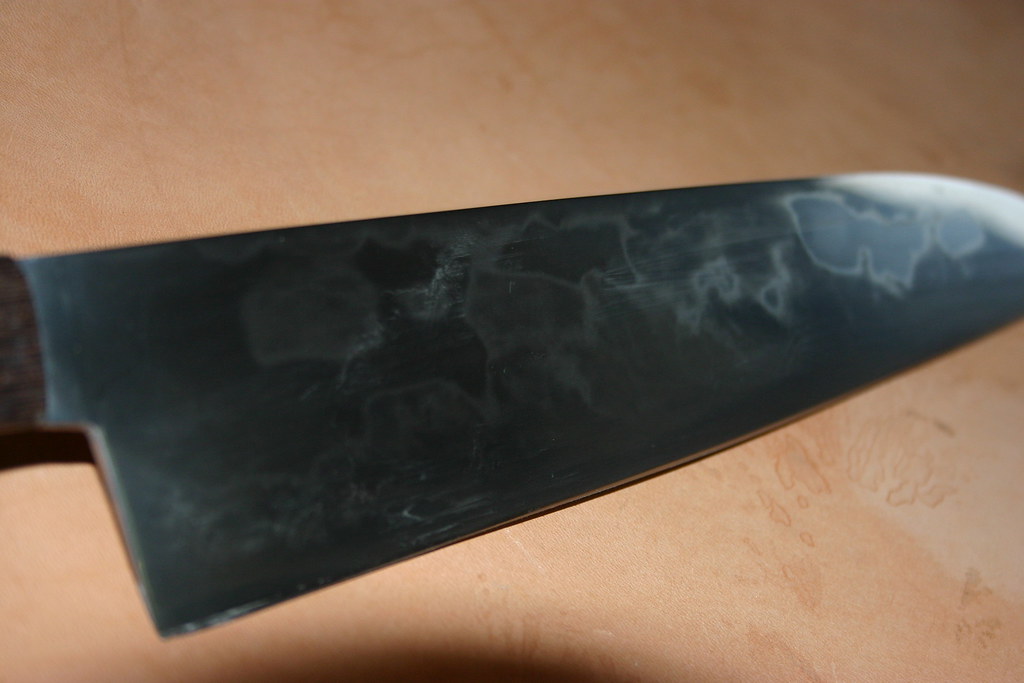I first met Bing at a hammer-in and he demonstrated doing a clayless hamon with a 1095 blade. He used a gas forge and a bucket of hot water to quench in. It was impressive. Anyone who knew Bing well understood he could be a bit stubborn at times. I remember him saying that someone had told him it couldn’t be done, so he decided he’d take that as a challenge.
He held the blade in the forge with some tongs and had the 5 gallon bucket nearby. He said he used the water as hot as it would come out of the tap at home. When he determined the blade was at the right temp, he QUICKLY went straight to the water and agitated it-somewhat violently-in the water.
That was several years ago and I think I have some notes on it somewhere along with a pic or two during the process on an old phone (stupid photobucket...). It really did leave an amazing hamon on that blade-I got to see it later on in the finishing process. One thing Bing did say was that wasn’t the method to use for consistent success, he cracked some blades while trying to figure it out. I sure miss Bing...
I built my salt pot, TK and it was a lot less than the price tag you mentioned. I first saw one up at Ed Caffrey’s shop and modeled mine after his. He used to have (maybe still does?) a bunch of info on it on his site. I ordered I think 316L tubs and plate from onlinemetals and paid someone to Tig weld the plate to the bottom of the tube. Then I just built an upright forge and some burners, etc. The forge heats up the stainless tube, the PID and gas solenoid control the on/off of the gas once temp is reached based on the info you put into the PID. I’m fairly certain mine is all kinds of ugly compared to what many others look like, but it does work

. One side note-I think I’d try and get the thickest tube wall I could find. I remember talking with John and his tube was a ways thicker than mine-I want to say something like 3/4”? It may take a little longer for that much metal to heat up and subsequently melt the “salts”, but it hangs onto that heat better than mine. I can tend to get some temp swings (overshooting a bit on the way up, dropping below target temp as the burners kick back on) with mine, but if I remember right, John’s has very minimal over/under temp swings.
I don’t have an oven, but would like one and have considered building one a number of times-just pretty intimidating with all the electrical stuff for me. I really like being able to use the salt pot for austenizing and the control it gives vs the gas forge. But for the clayless hamon, I can say with certainty that it can be done with a gas forge

. I look forward to seeing what you come up with, sir.
Jeremy


 IMG_0770
IMG_0770 IMG_1597
IMG_1597

 IMG_5926
IMG_5926